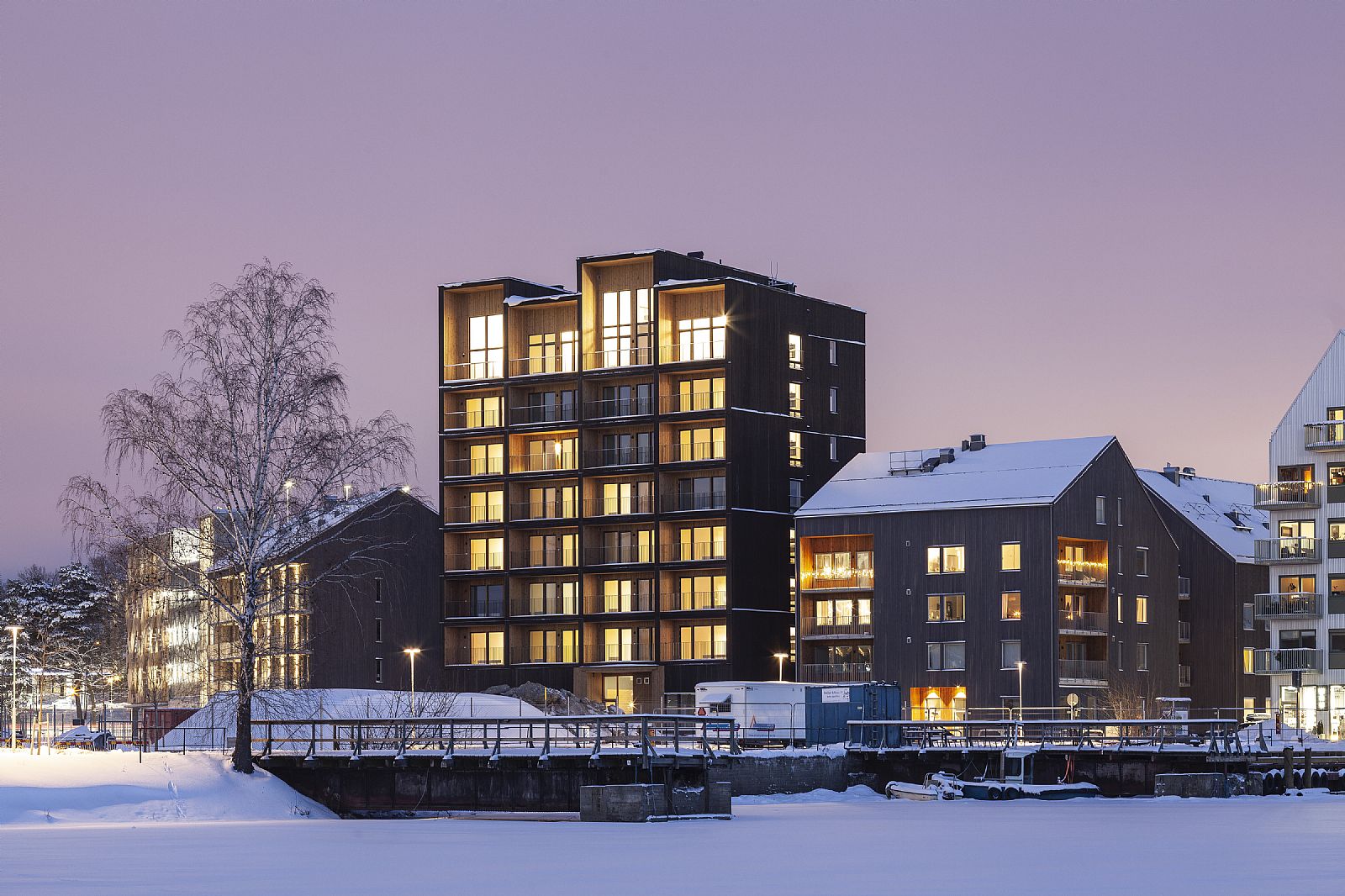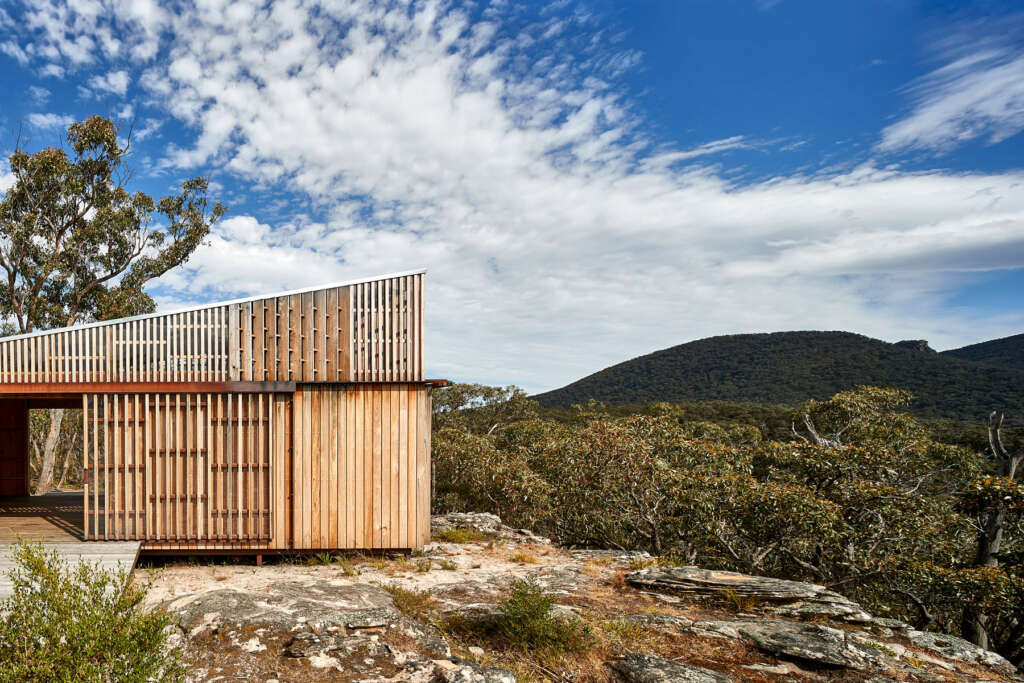
Grampians Peaks Trail Cabins
Architects: McGregor Coxall, Noxon Giffen
Location: Grampians National Park, Victoria, Australia
Type: Cabin
Year: 2022
Photographs: Shannon McGrath Photography
The following description is courtesy of the architects. Setting a new benchmark for cultural ecotourism, the newly completed Grampians Peaks Trail (GPT) is now open to the world following the completion of Stage 2 works.
Comprising new hike-in camps and 160km of track along the pristine Gariwerd (Grampians) wilderness, GPT is bound by a series of breathtaking views and memorable experiences through a walk that will conserve, protect, and celebrate the landscape’s unique beauty while achieving the highest possible grade of environmental sensitivity. A major drawcard takes the form of 11 new minimalistic campsites, featuring amenities restricted to essentials of tent platforms, communal areas, shelters, and toilets to amplify the hiker experience with an appropriate level of comfort.
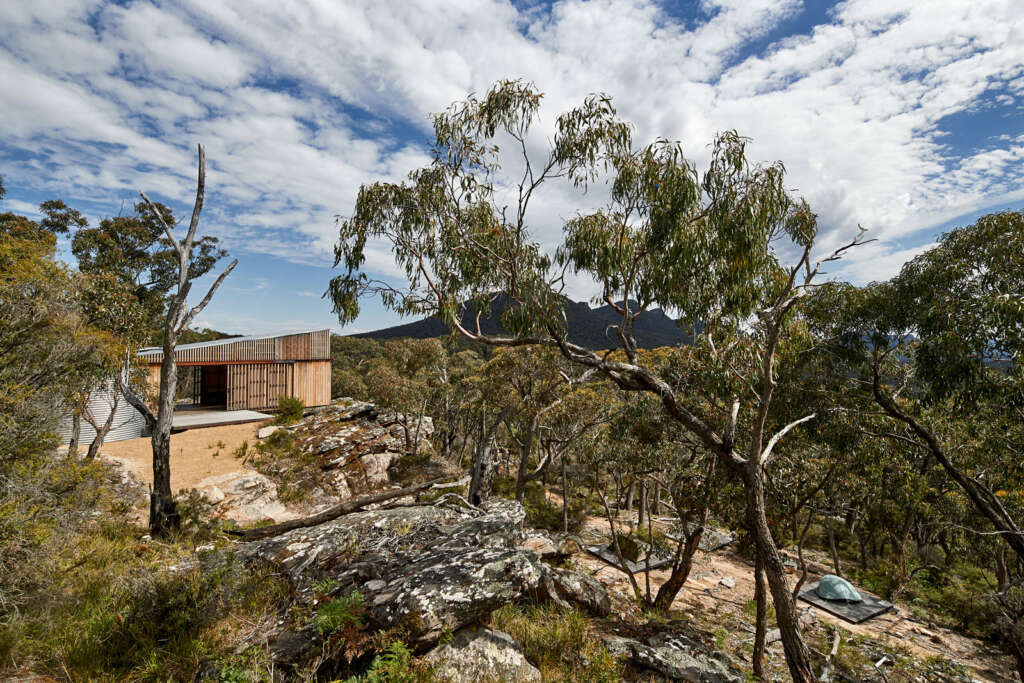
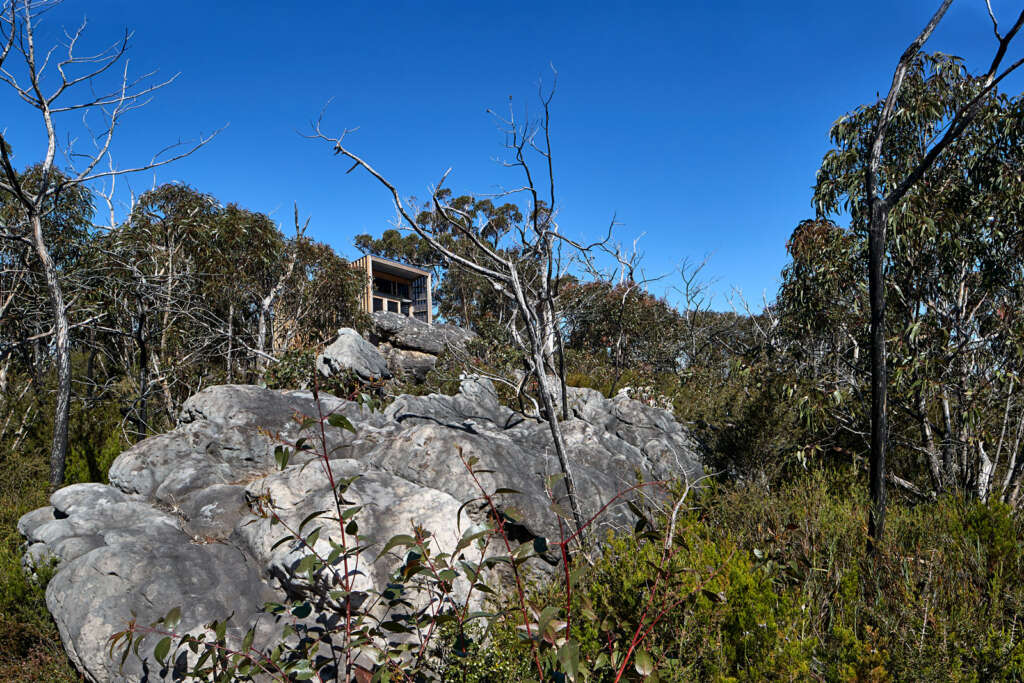
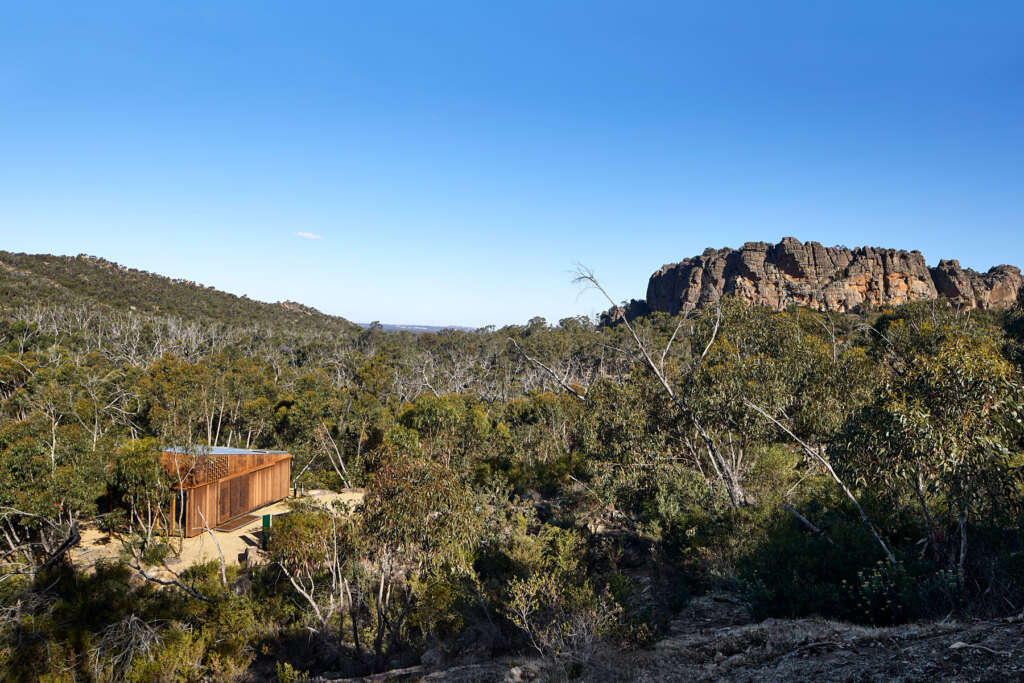
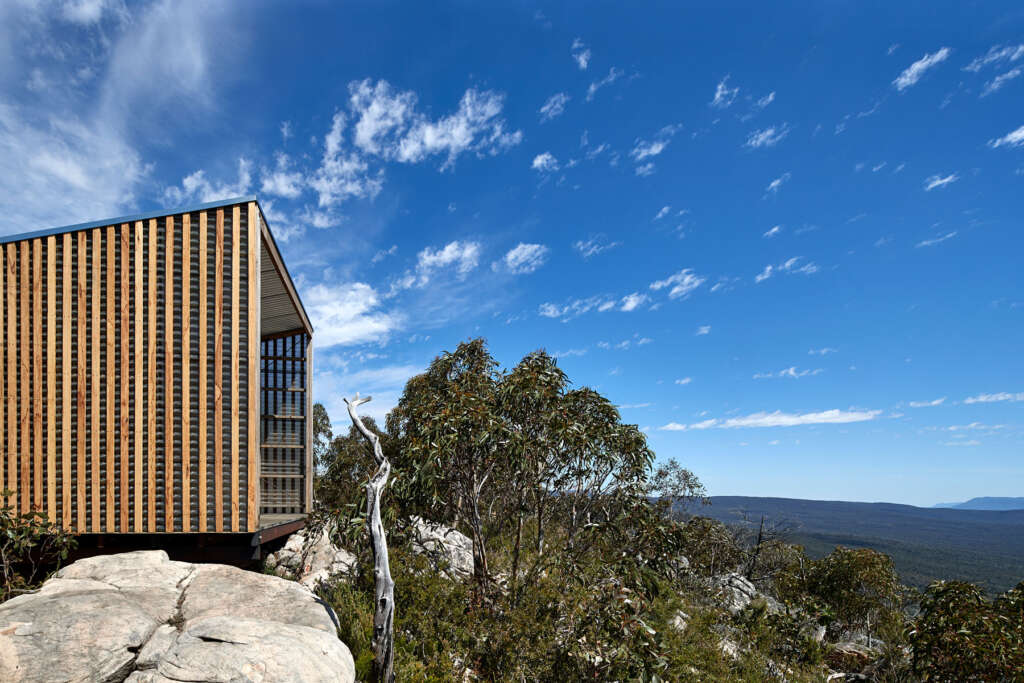
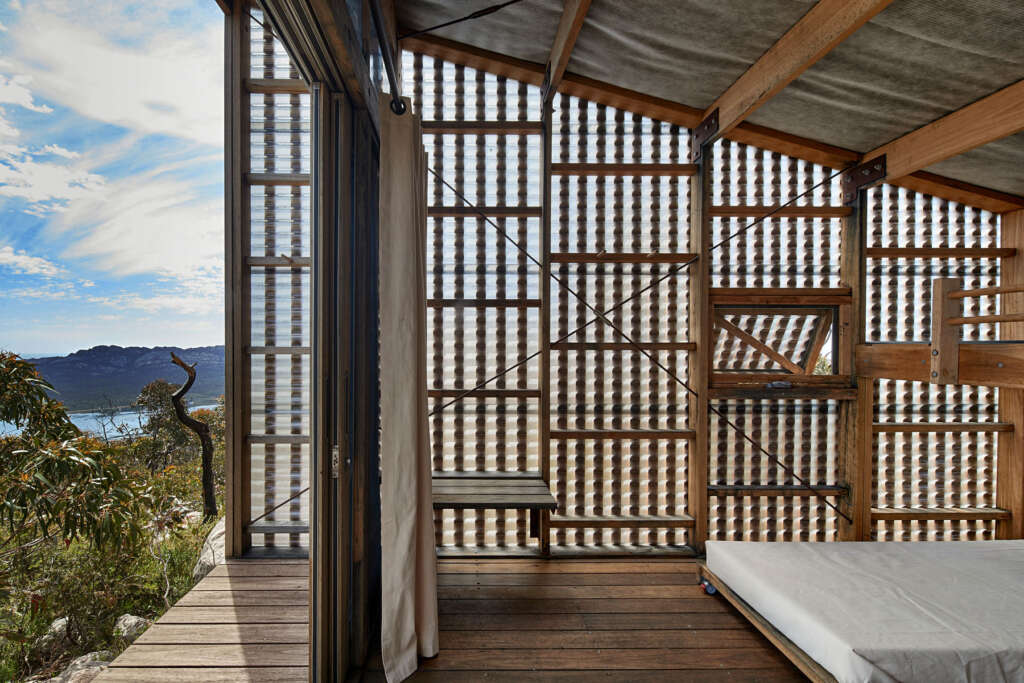
Heading southbound from Mt Zero in the north, the trail passes over the summit of Gar (Mt Difficult), continuing through Halls Gap with hiking highlights including Redman Bluff, Major Mitchell Plateau and Mt Abrupt (Mud-dadjug) before reaching Dunkeld. A diverse trail programme accounts for day trips through to 13-day odysseys, tailored to a vast array of users including outdoor enthusiasts, families, and more.
The trail and campsite locations were established by Parks Victoria whilst lead consultant and multidisciplinary design firm McGregor Coxall were responsible for setting design palettes, site layouts and landscape architecture for Stage 2 works – working closely with Noxon Giffen (Architects) and OPS Engineers (Structural Engineers) in a highly-collaborative operation spanning 3.5 years.
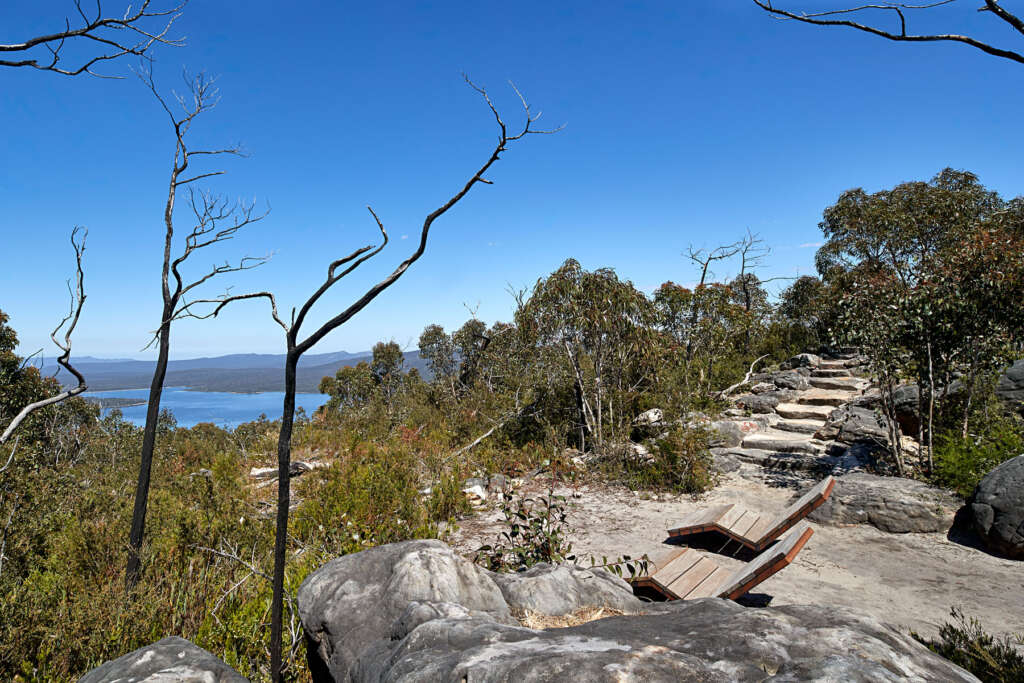
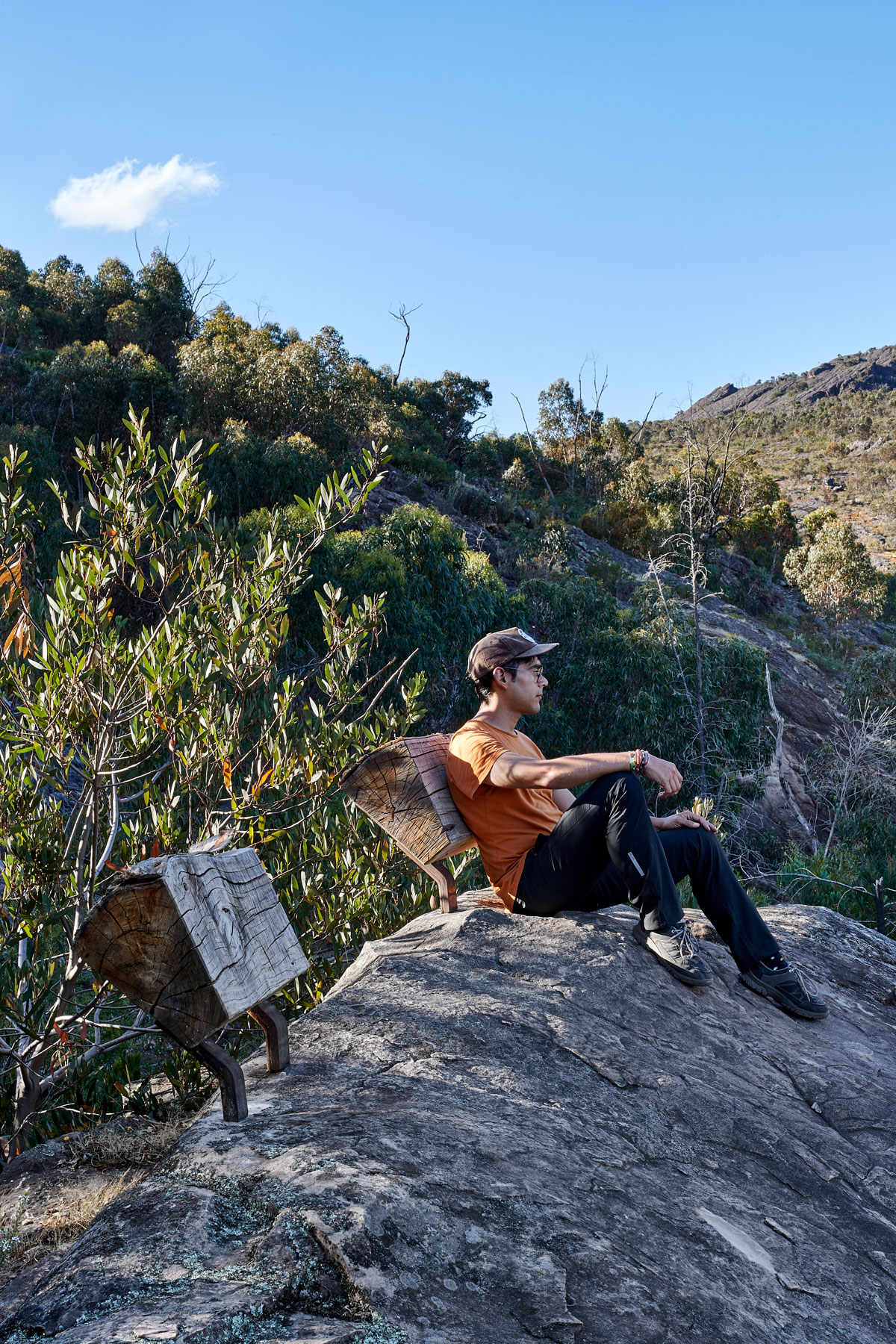
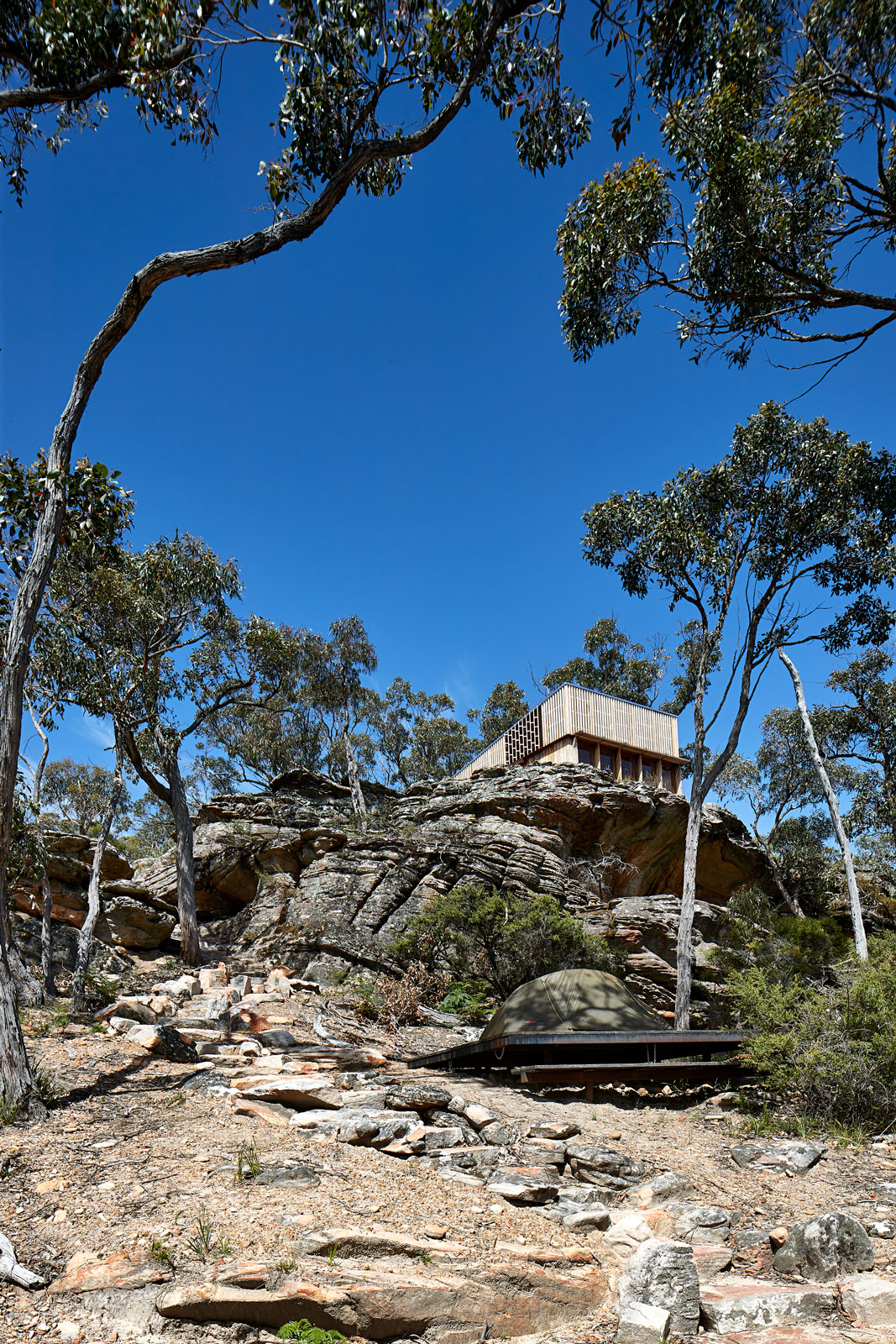
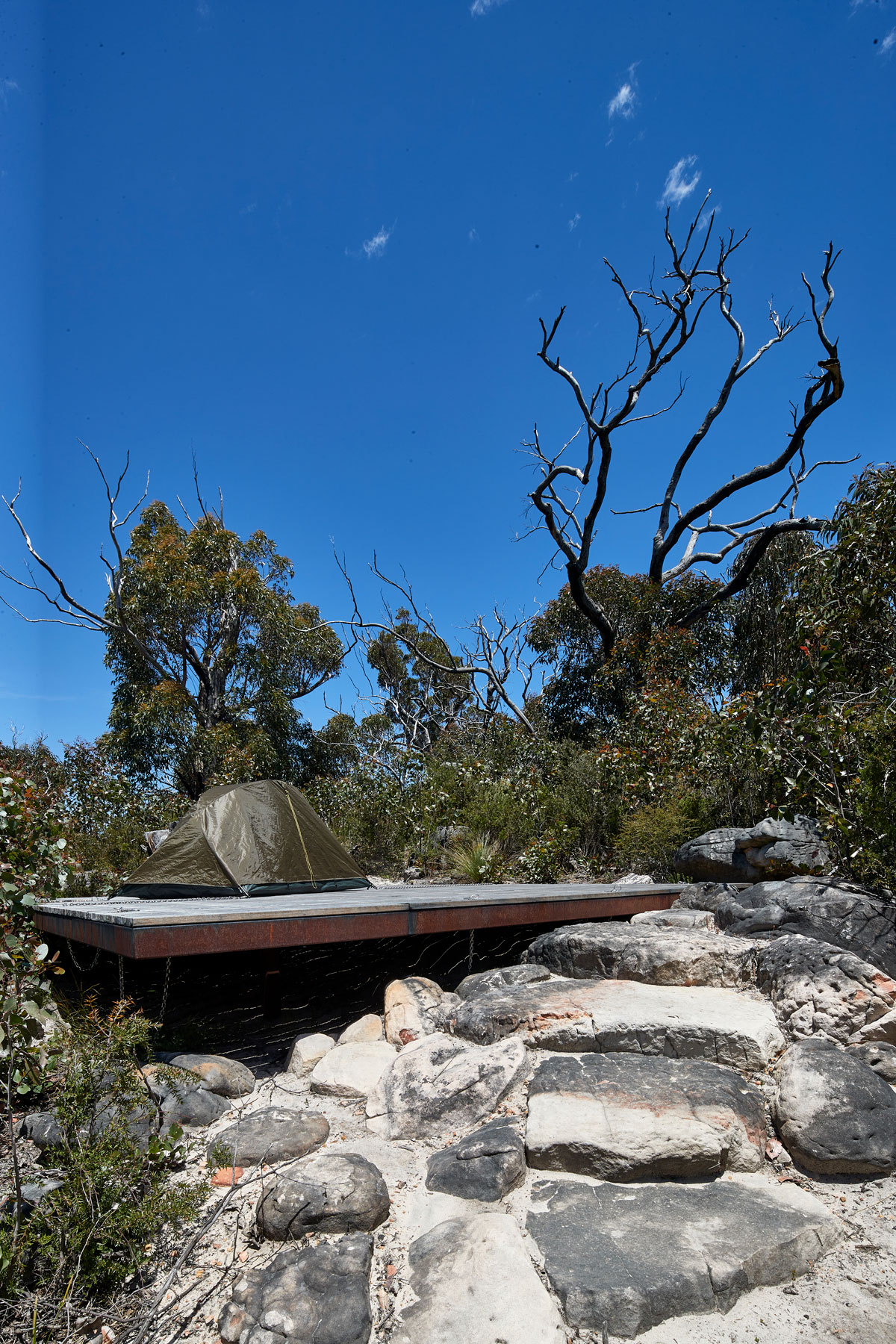
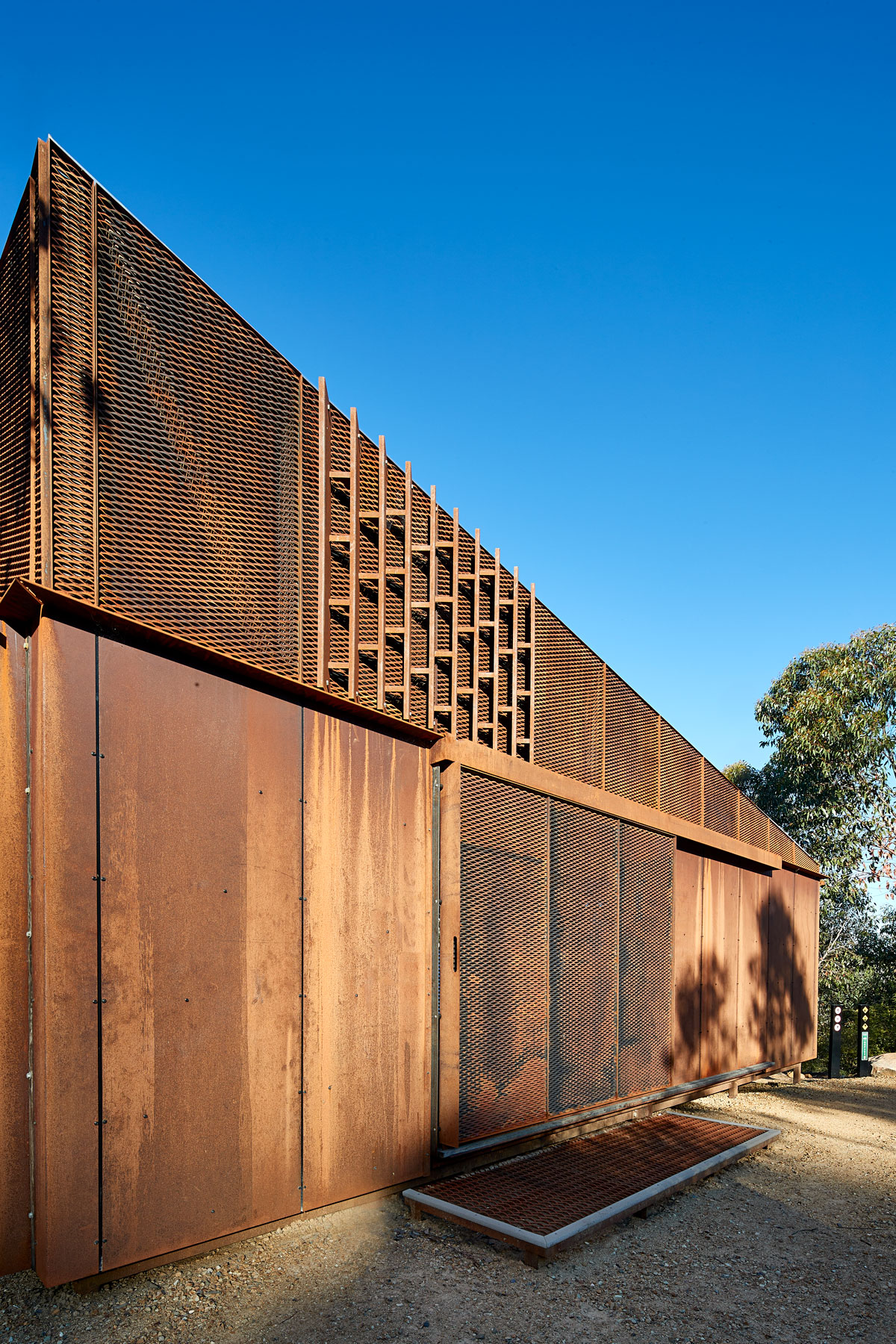
As part of the design process, Parks Victoria worked closely with Traditional Owners to define clear guidelines and boundaries for landform, ecology, spatial typology, and cultural immersion at each site. As a result, the trail will bring visitors closer to the rich Aboriginal culture of the Jardwadjali and Djab Wurrung peoples who have lived in these ranges for thousands of years.
“McGregor Coxall’s landscape approach ensures that campsites “touch the ground lightly”, minimising impact on the environment and maintaining Gariwerd’s iconic, biodiverse landscape as the hero”, said McGregor Coxall’s Project Director and Melbourne Co-Studio Leader, Nick Griffin.
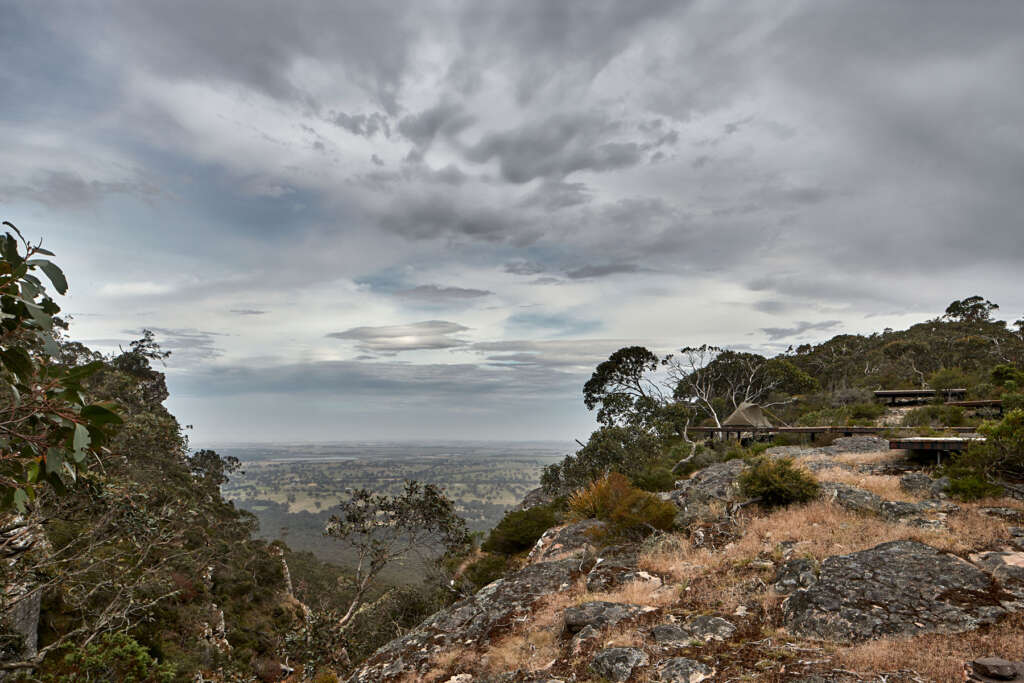
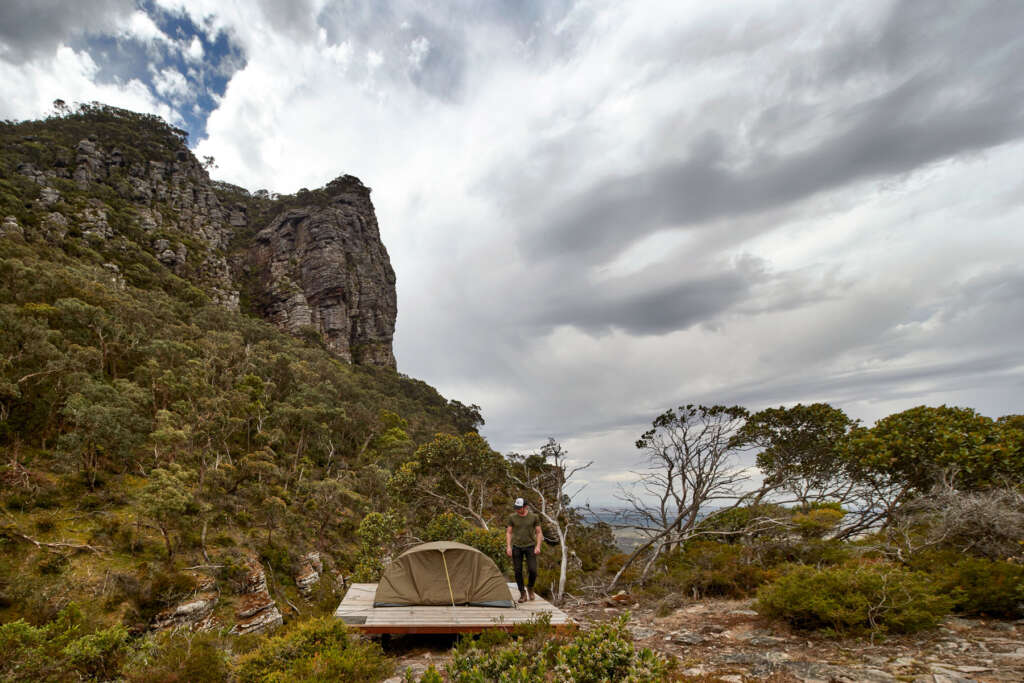
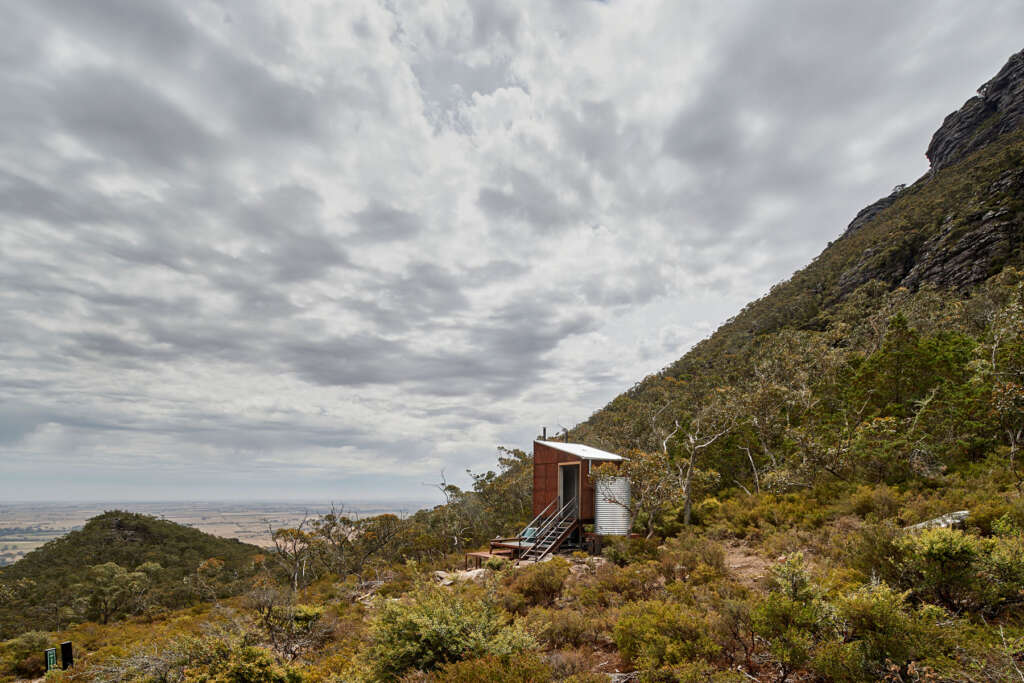
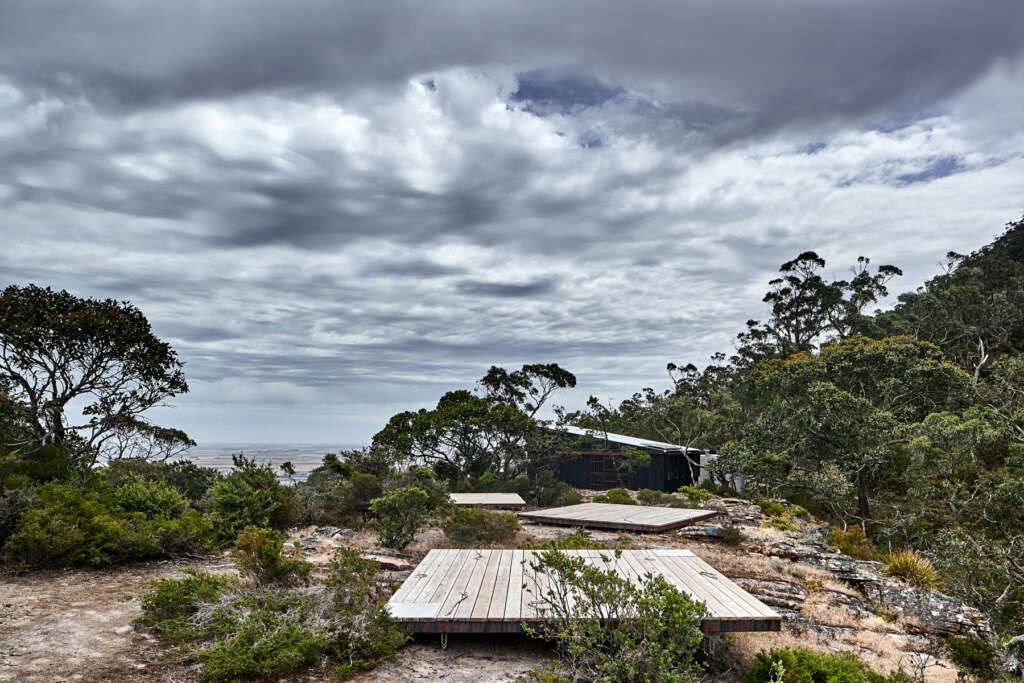
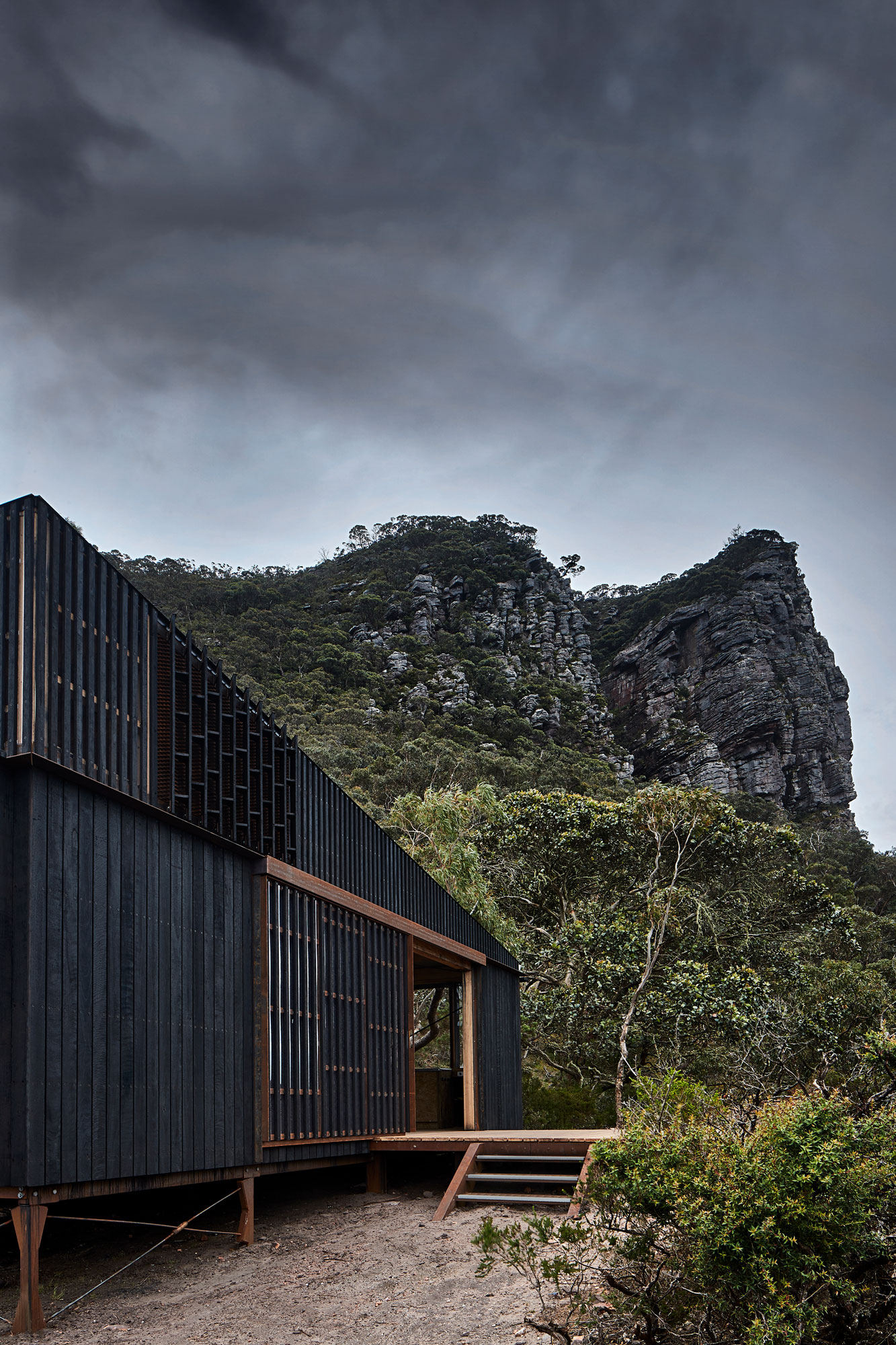
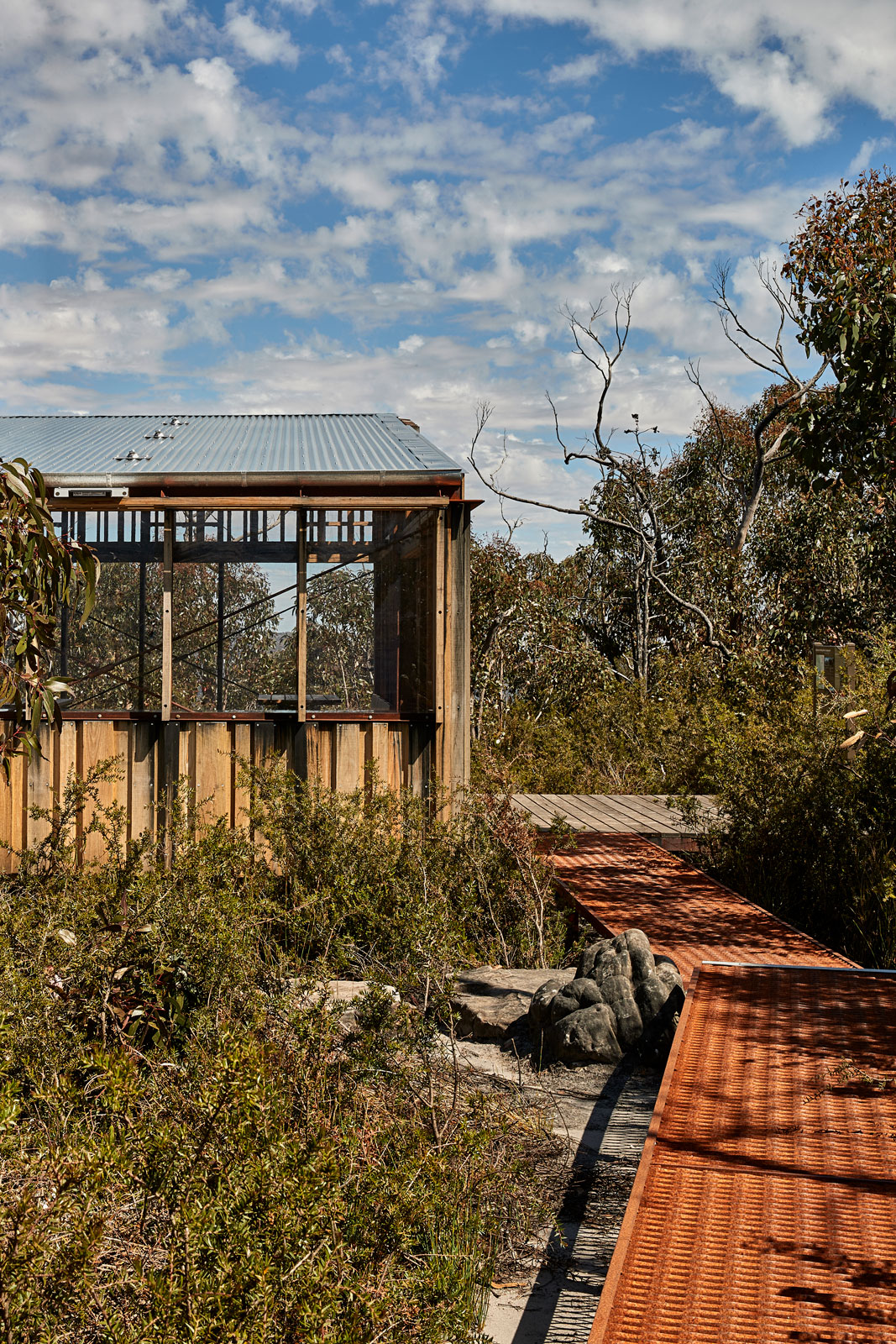
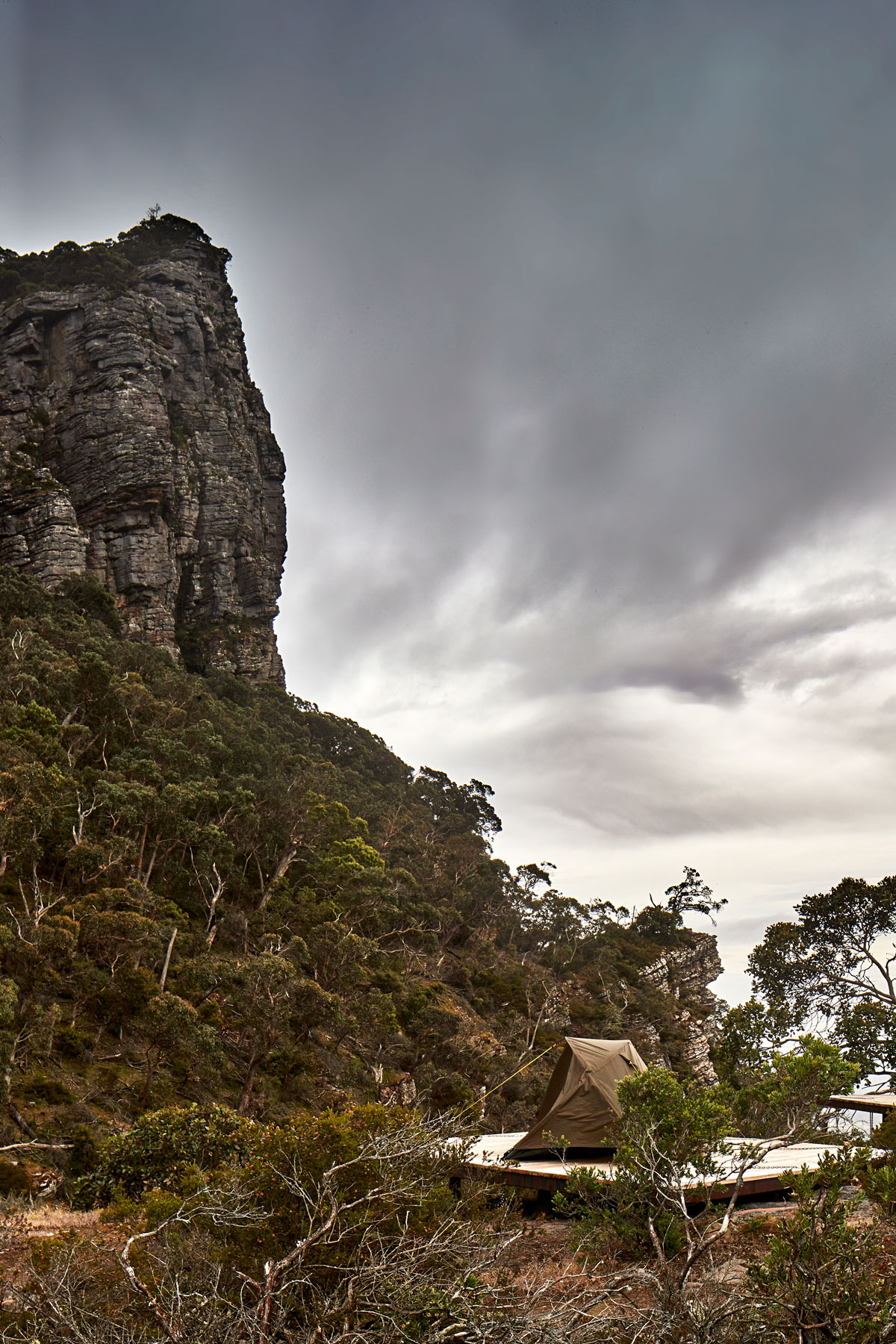
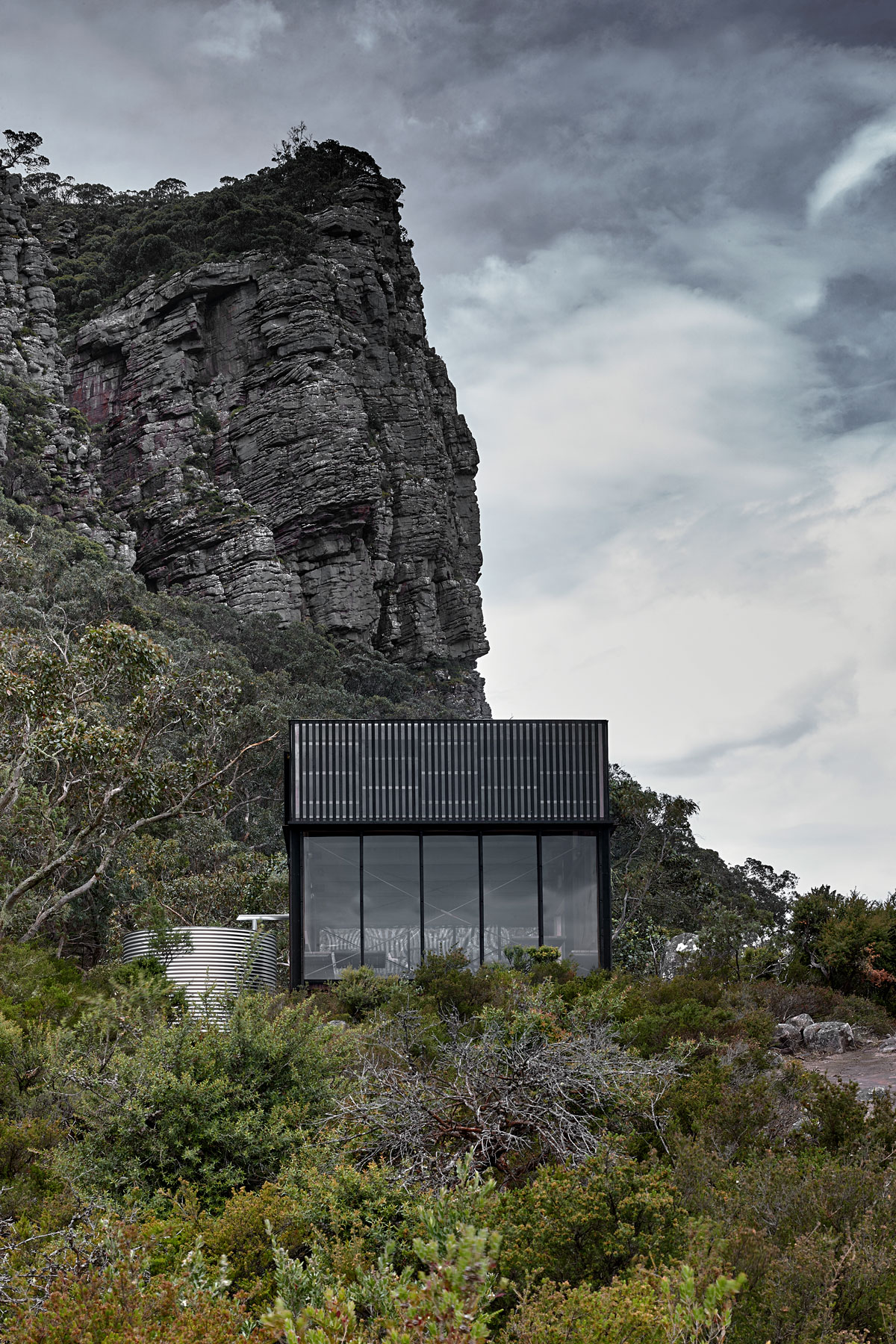
“A family of architecture, designed in close collaboration with Noxon Giffen, responds to sites’ unique geological conditions and character and are tailored for harmony with site lines, sun exposure, wind, and ecological communities,” said Griffin. “A common thread is established through all sites, incorporating site-specific responses that curate the various contexts, stories, and conditions of each of the locations.
“Architecture offers protection from the elements without completely inhibiting the senses of nature. Off-grid campsites are designed with mindfulness to guidelines and tracks – intuitive circulation allows for more sustainable campsites that minimise public access to dense vegetation. In complement, site greywater is treated to the highest possible standards through natural passive systems.”
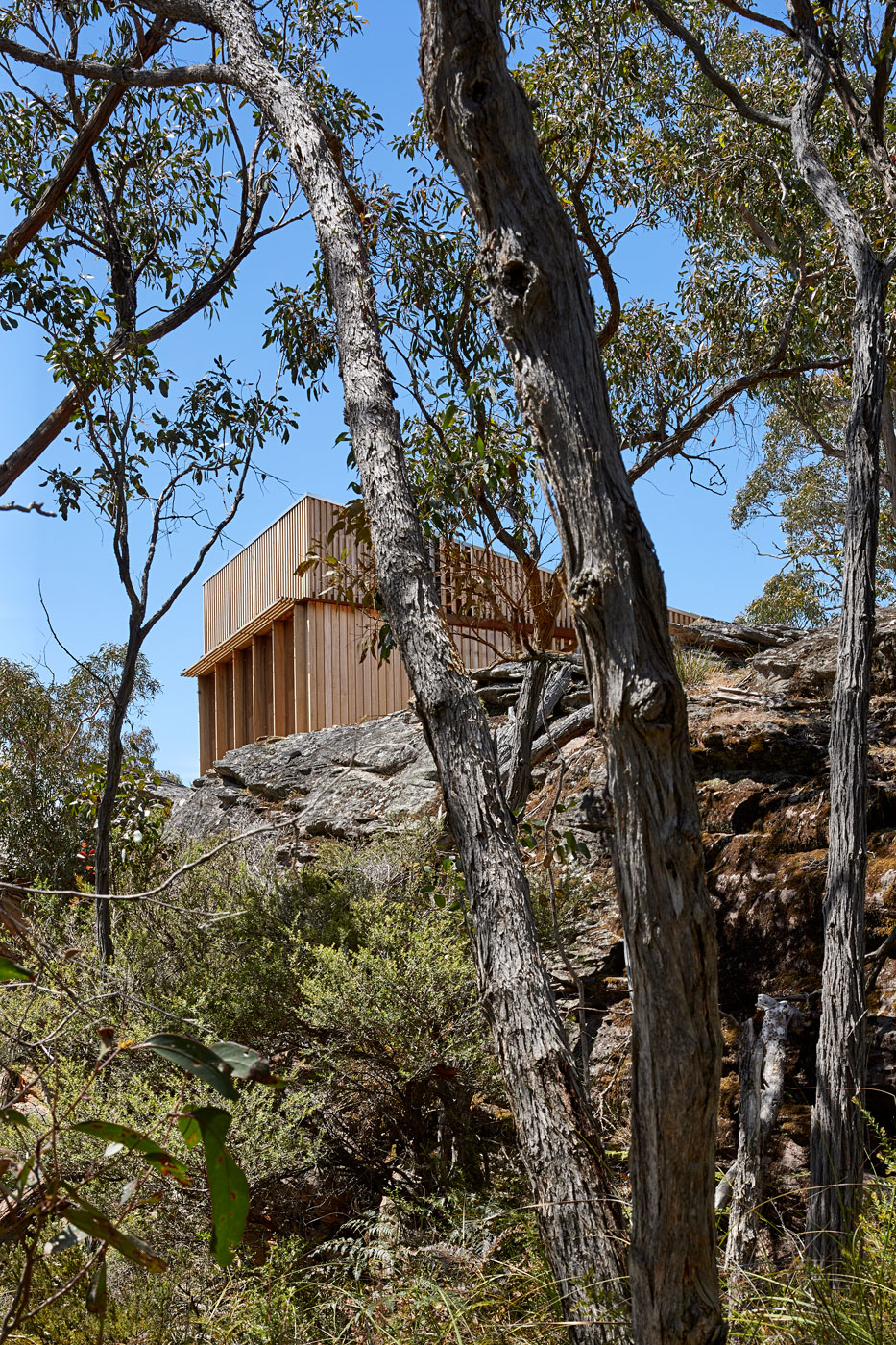
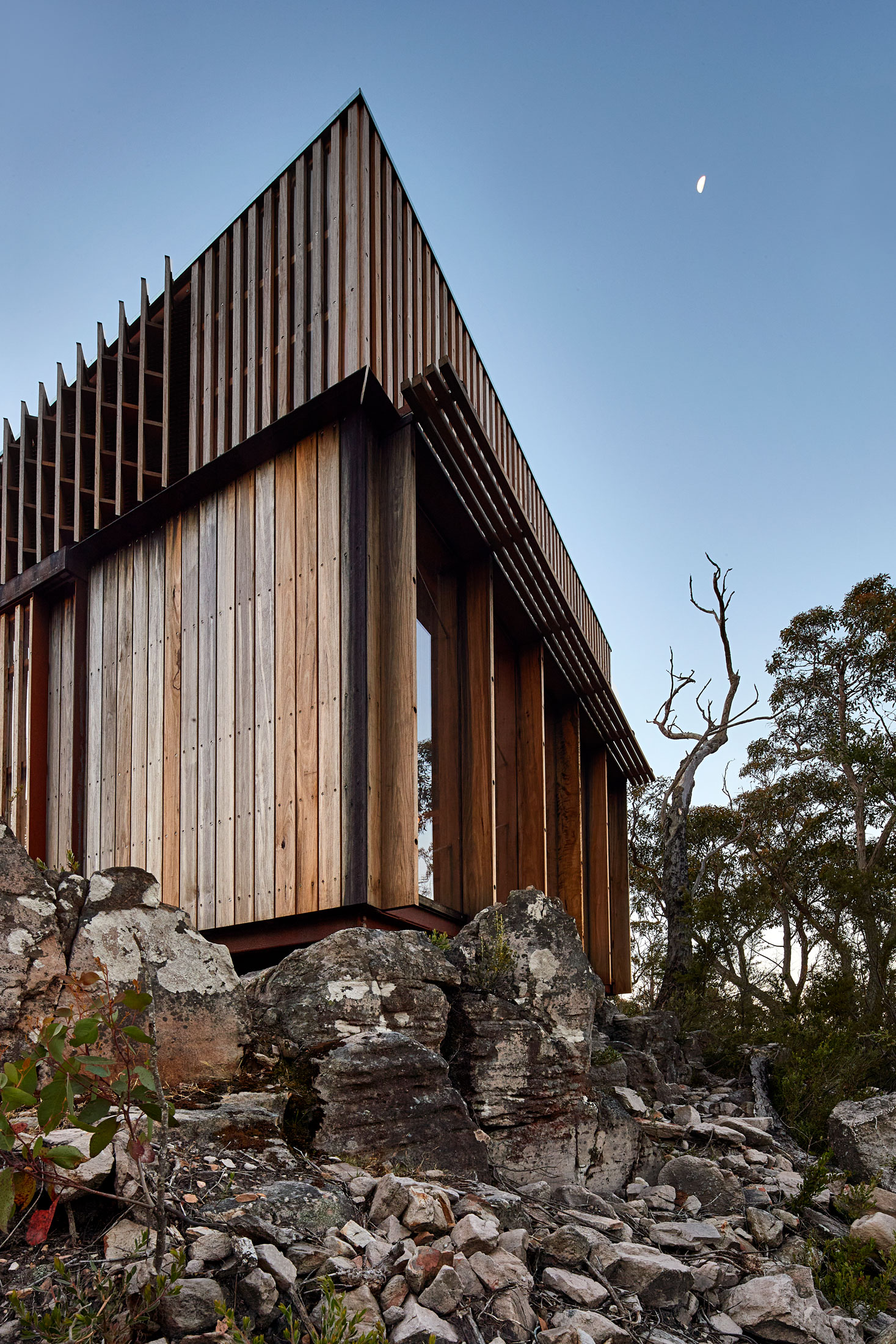
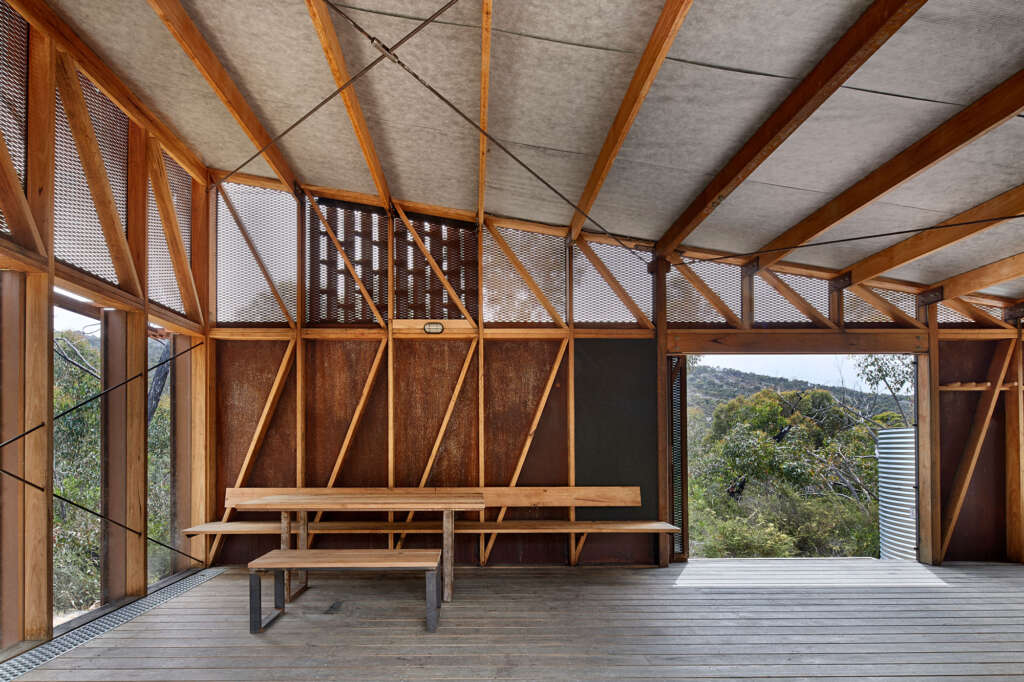
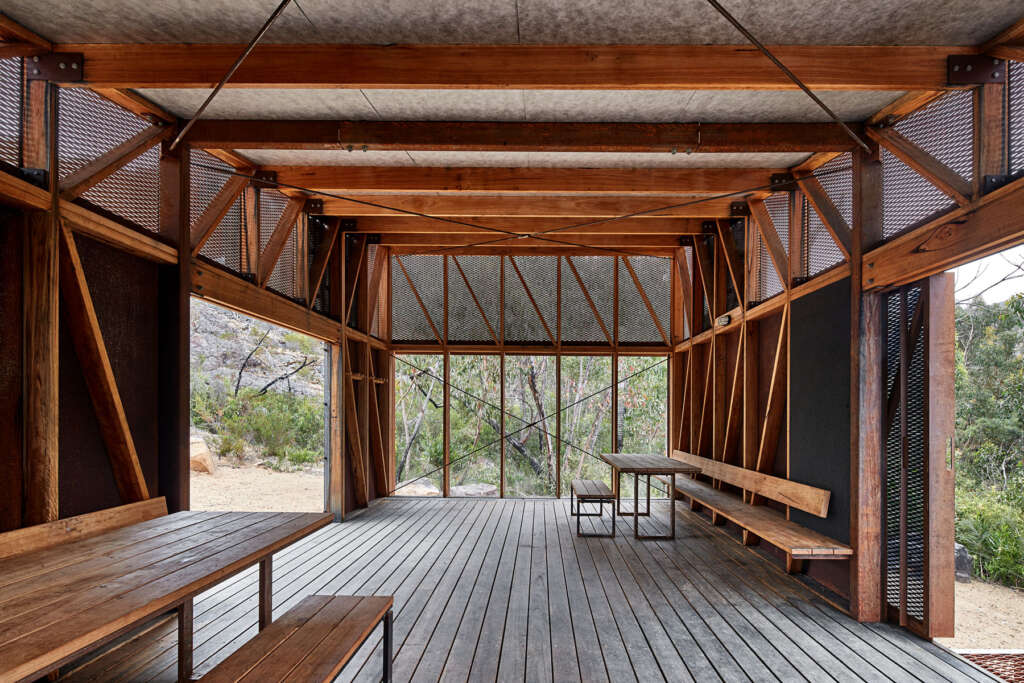
“A considered and evolving selection of natural materials was used throughout, responding to the specific nature, colours and textures of each individual campsite” said Noxon Giffen’s Design Director, Justin Noxon.
“Branches of organic cladding mimic the sequence of vegetation, charred timber offers a dark silhouette amongst burnt out trees from historical bushfires, silvered timber shelters extend from rocky outcrops, and oxidised mild steel shares unique tonal reds of oxidised sandstone,” said Noxon. “Sitting lightly within the terrain, the structures will be engulfed by vegetation and gain the patina of the site as they age and weather over time.”
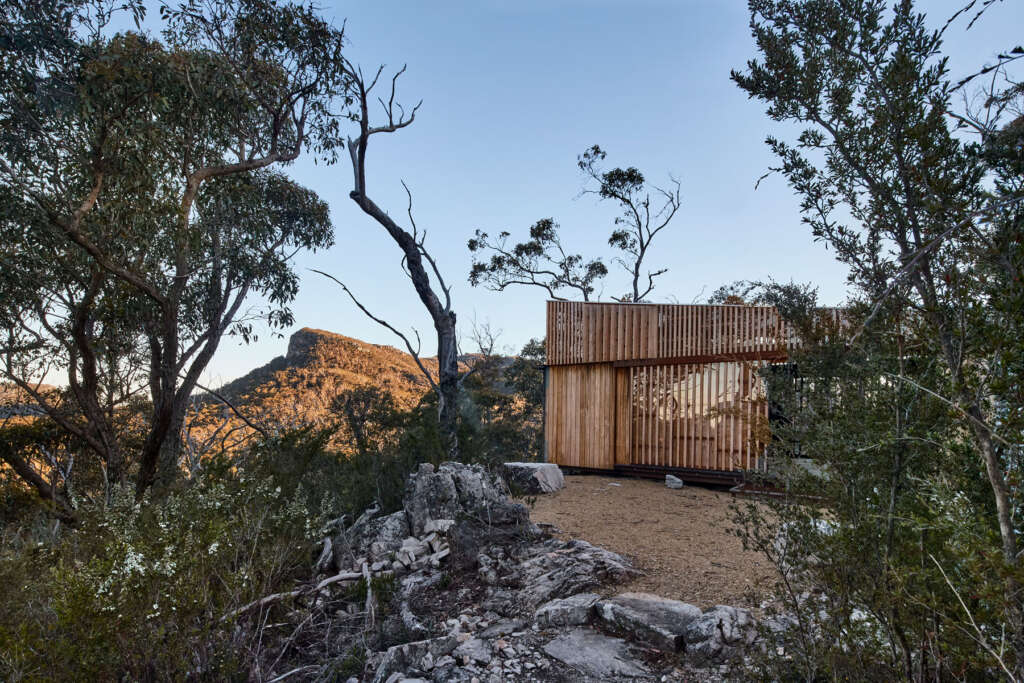
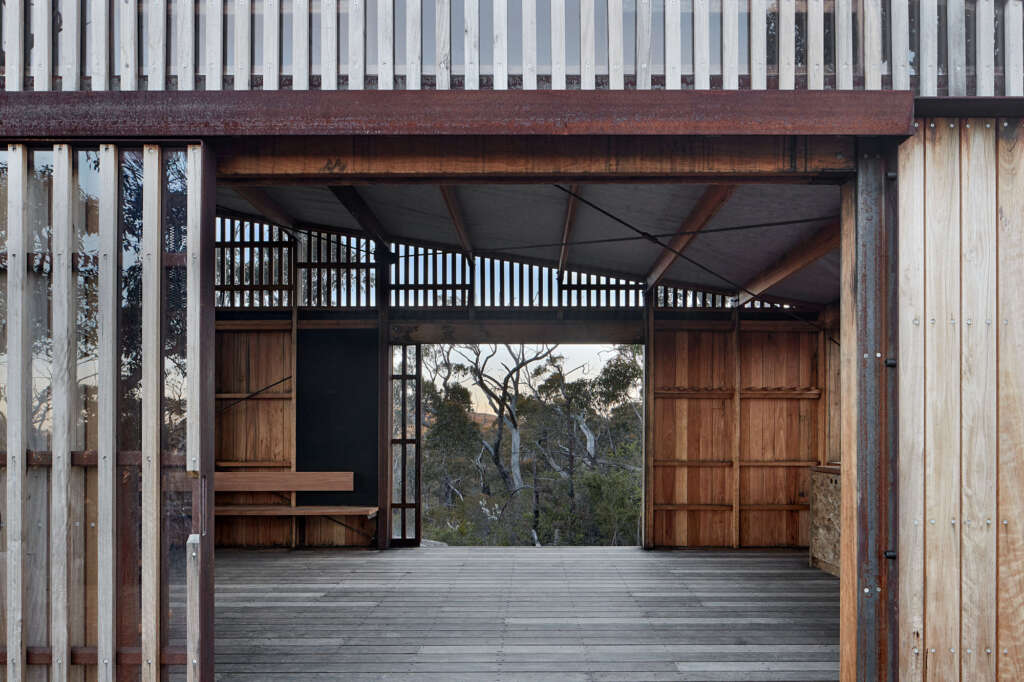
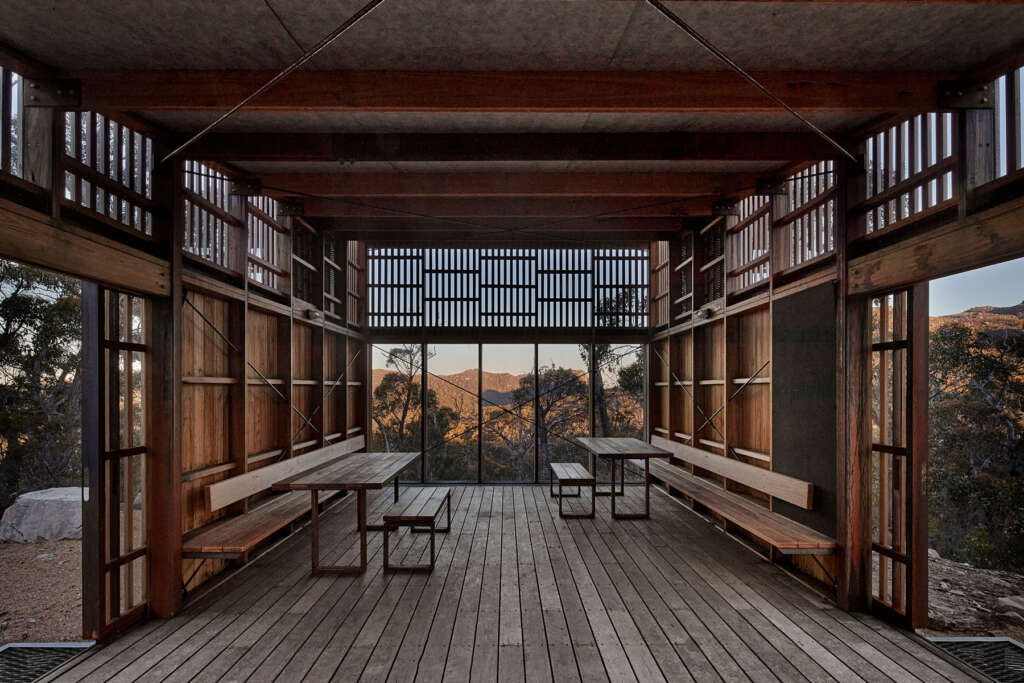
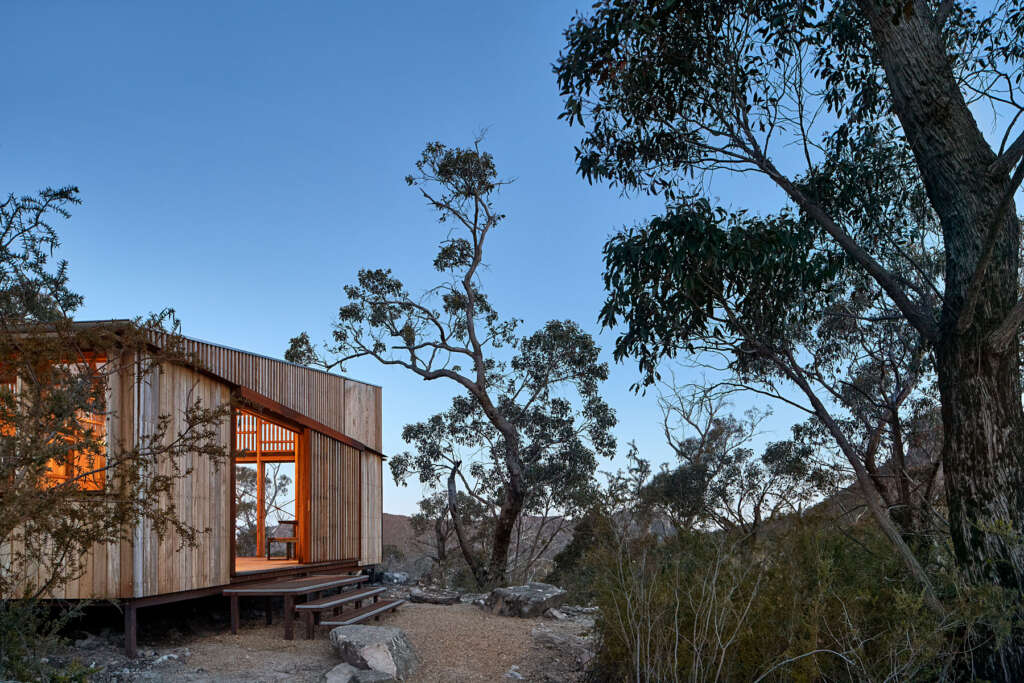
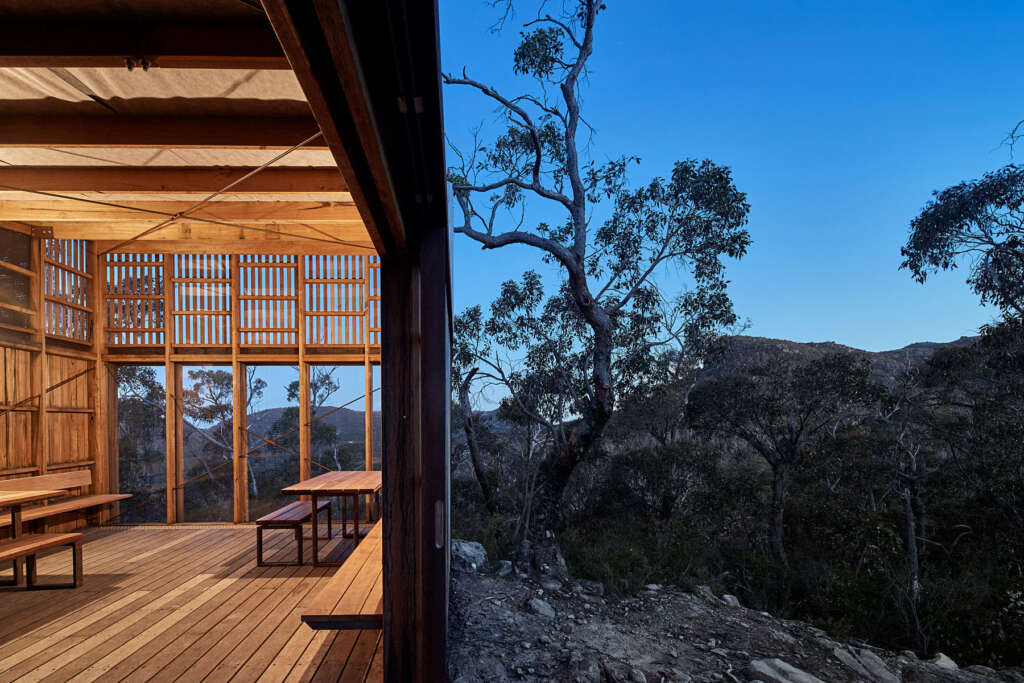
Fundamental to Parks Victoria brief were three key elements: a celebration of Gariwerd with landscape as the hero, recognition of the scale and diversity of the terrain through site responsive designs, and the adoption of design strategies for construction and maintenance that respond to the trail’s remote nature.
The Grampians Peak Trail will bring an important economic and tourism development opportunity for the local community, the region and Victoria as a key nature-based tourism destination and will be one of the great iconic walks of Australia. The project aims to increase the total number of walkers using the Grampians Peaks Trail from 13,800 in 2015 to over 34,000 walkers by 2025 and will generate more than $6 million of economic benefit for the region and Victoria.




